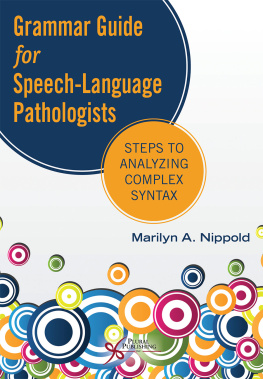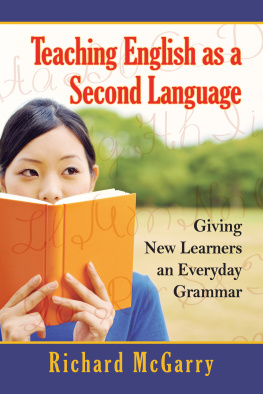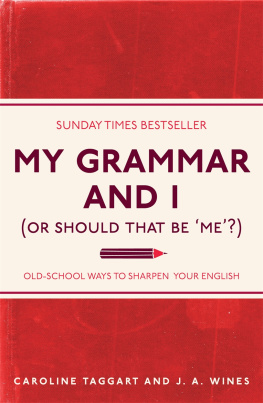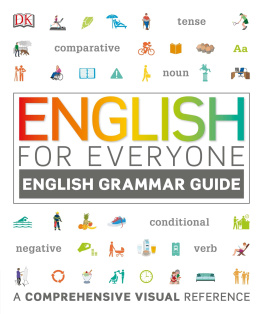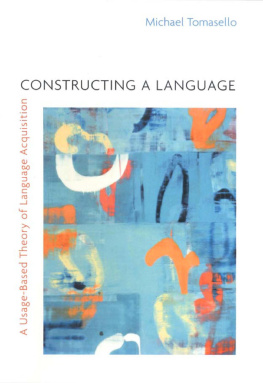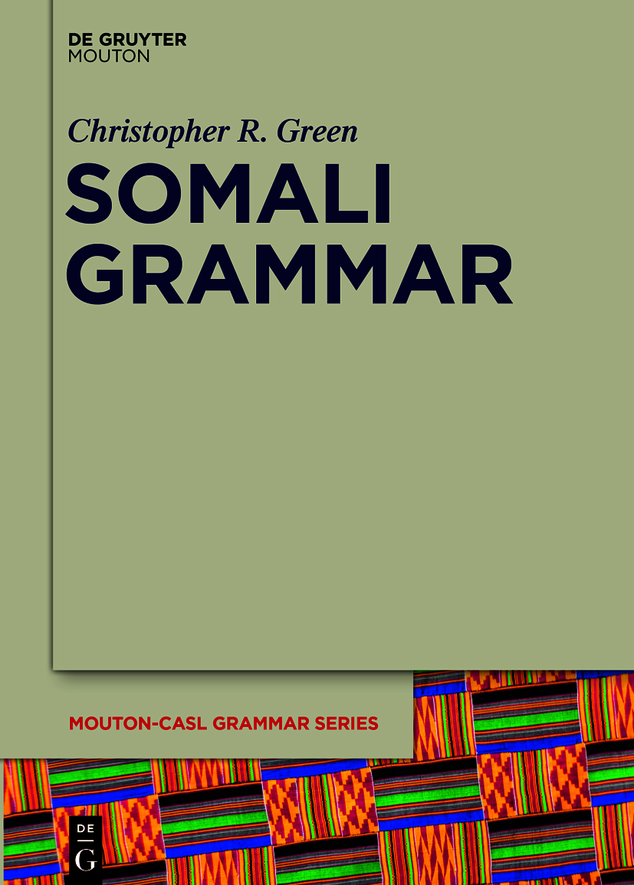Mouton-CASL Grammar Series
Edited by
Anne Boyle David
Claudia Brugman
Thomas J. Conners
Amalia Gnanadesikan
Volume
ISBN 9781501511653
e-ISBN (PDF) 9781501503610
e-ISBN (EPUB) 9781501503511
Bibliographic information published by the Deutsche Nationalbibliothek
The Deutsche Nationalbibliothek lists this publication in the Deutsche Nationalbibliografie; detailed bibliographic data are available on the Internet at http://dnb.dnb.de.
2021 Walter de Gruyter GmbH, Berlin/Boston
Christopher R. Green
Somali Grammar
Mouton-CASL Grammar Series

Editors
Anne Boyle David
Claudia M. Brugman
Thomas J. Conners
Amalia Gnanadesikan
Volume 5
Christopher R. Green
Somali Grammar

Edited by
Nicola Lampitelli
Evan Jones

ISBN 978-1-5015-1165-3
e-ISBN (PDF) 978-1-5015-0361-0
e-ISBN (EPUB) 978-1-5015-0351-1
Library of Congress Control Number: 2021942352
Bibliographic information published by the Deutsche Nationalbibliothek
The Deutsche Nationalbibliothek lists this publication in the Deutsche Nationalbibliografie; detailed bibliographic data are available on the Internet at http://dnb.dnb.de.
2021 Walter de Gruyter, Inc., Boston/Berlin
Cover photo: Muratani / iStock / Getty Images Plus
www.degruyter.com

for my mentors Stuart Davis, Daniel Dinnsen, and Samuel Obeng
Foreword
It is remarkable that, in this age of unprecedented global communication and interaction, the majority of the worlds languages are as yet not adequately described. Without basic grammars and dictionaries, these languages and their communities of speakers are in a real sense inaccessible to the rest of the world. This state of affairs is antithetical to todays interconnected global mindset.
This series, undertaken as a critical part of the mission of the University of Maryland Center for Advanced Study of Language (CASL), is directed at remedying this problem. One goal of CASLs research is to provide detailed, coherent descriptions of languages that are little studied or for which descriptions are not available in English. Even where grammars for these languages do exist, in many instances they are decades out of date or limited in scope or detail.
While the criticality of linguistic descriptions is indisputable, the painstaking work of producing grammars for neglected and under-resourced languages is often insufficiently appreciated by scholars and graduate students more enamored of the latest theoretical advances and debates. Yet, without the foundation of accurate descriptions of real languages, theoretical work would have no meaning. Moreover, without professionally produced linguistic descriptions, technologically sophisticated tools such as those for automated translation and speech-to-text conversion are impossible. Such research requires time-consuming labor, meticulous description, and rigorous analysis.
It is hoped that this series will contribute, however modestly, to the ultimate goal of making every language of the world available to scholars, students, and language lovers of all kinds. I would like to take this opportunity to salute the linguists at CASL and around the world who subscribe to this vision as their lifes work. It is truly a noble endeavor.
Richard D. Brecht
Founding Executive Director
University of Maryland Center for Advanced Study of Language
Series Editors Preface
This series arose out of research conducted on several under-described languages at the former University of Maryland Center for Advanced Study of Language. In commencing our work, we were surprised at how many of the worlds major languages lack accessible descriptive resources such as reference grammars and bilingual dictionaries. Among the projects undertaken at the Center was the development of such resources for various under-described languages. This series of grammars presents some of the linguistic description we undertook to fill such gaps.
The languages covered by the series represent a broad range of language families and typological phenomena. They are spoken in areas of international significance, some in regions associated with political, social, or environmental instability. Providing resources for these languages is therefore of particular importance.
However, these circumstances often make it difficult to conduct intensive, in-country fieldwork. In cases where such fieldwork was impractical, the authors of that grammar have relied on close working relationships with native speakers, and, where possible, corpora of naturalistic speech and text. The conditions for data-gatheringand hence our approach to itvary with the particular situation.
We found the descriptive state of each language in the series to be different from that of the others: in some cases, much work had been done, but had never been collected into a single overview; in other cases, virtually no materials in English existed. Similarly, the availability of source material in the target language varies widely: in some cases, literacy and media are very sparse, while for other communities plentiful written texts exist. The authors have worked with the available resources to provide descriptions as comprehensive as these materials, the native speaker consultants, and their own corpora allow.
One of our goals is for these grammars to reach a broad audience. For that reason the authors have worked to make the volumes accessible by providing extensive exemplification and theoretically neutral descriptions oriented to language learners as well as to linguists. All grammars in the series, furthermore, include the native orthography, accompanied where relevant by Romanization. While they are not intended as pedagogical grammars, we realize that in many cases they will supply that role as well.
Each of the grammars is presented as a springboard to further research, which for every language continues to be warranted. We hope that our empirical work will provide a base for theoretical, comparative, computational, and pedagogical developments in the future.
Claudia M. Brugman
Thomas J. Conners
Anne Boyle David
Amalia E. Gnanadesikan
Acknowledgements
This project began largely by accident in 2011 at the University of Marylands former Center for Advanced Study of Language (CASL). As a new research scientist at CASL and fresh out of my PhD program, I was approached by Matt Heller. Matt had just finished a Somali course that was designed for adults learners of the language with previous success in learning another foreign language. Matt explained to me that he and his classmates had struggled for various reasons throughout their course, in large part because the materials available to them were in some ways written through the lens of European languages, rather than focused on the characteristics of Somali. As a result, their coursebooks treated certain fairly transparent features of Somali (e.g., verb inflection) in a very convoluted way while glossing over others that were much more tricky (e.g., negation strategies and subordination). Charged with coming up with new projects to propose to our Director of Research, I started delving into the literature on Somali to see what we could do to help, and shortly thereafter, I was hooked. My dissertation work was on Bambara, a Mande language spoken in Mali, which has very little morphology and very straightforward morphophonology. All of the sudden, I was faced with tons of morphology and an incredible array of alternations that were only mentioned in passing in the literature. As a phonologist, I was like a kid in a candy store, and my love affair with Somali began. To Matt Heller, I offer a heartfelt


